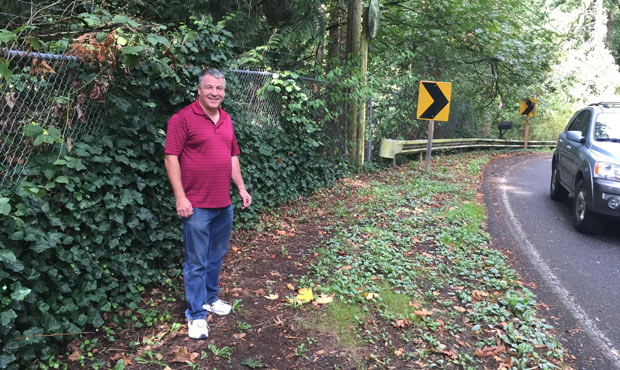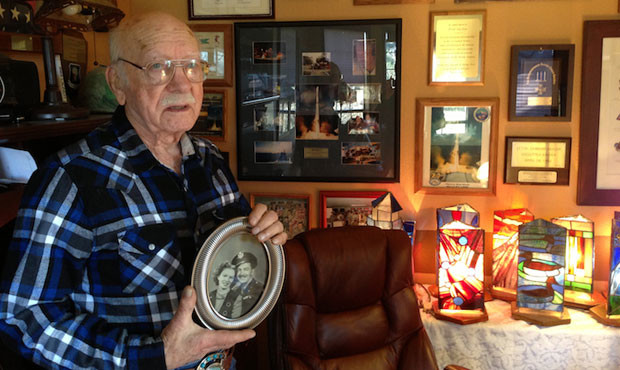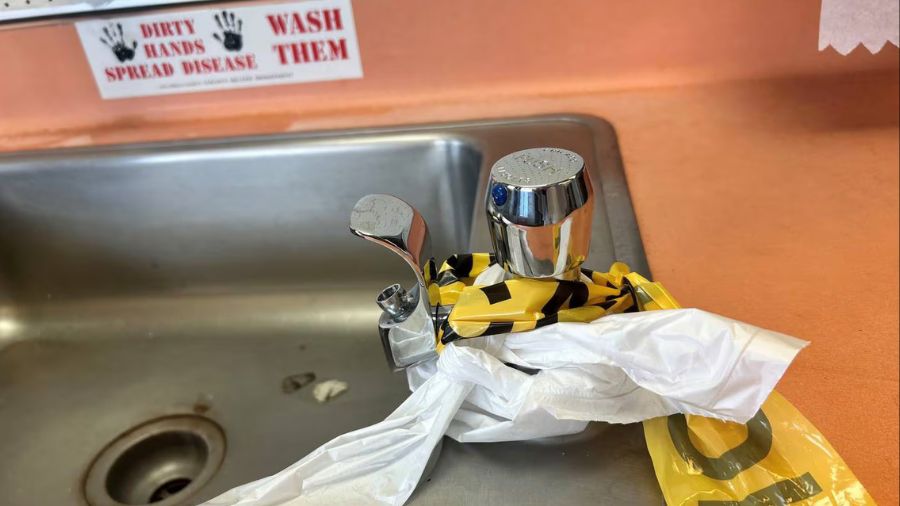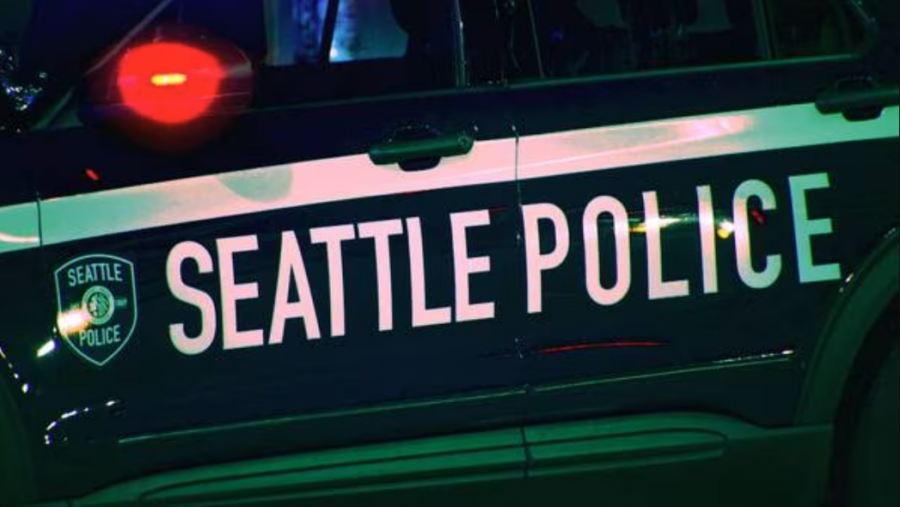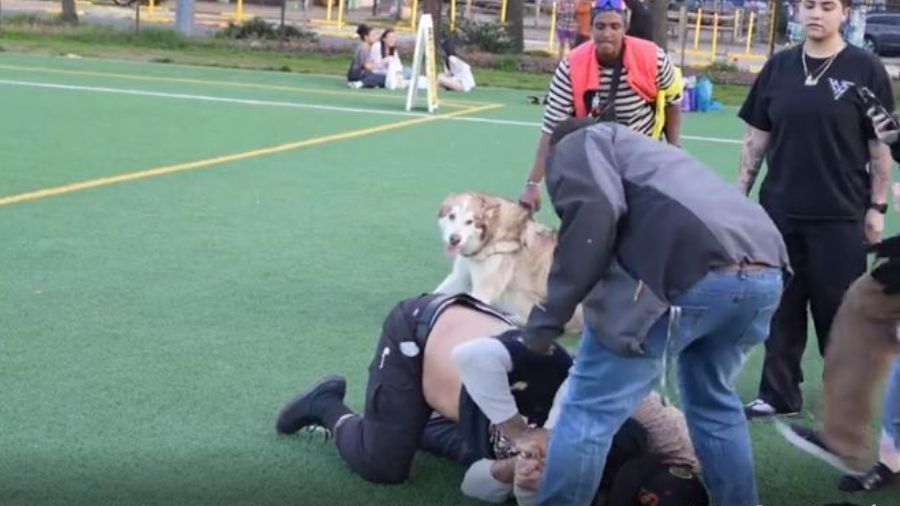What happened to Seattle’s newspaper shacks?
Sep 21, 2016, 5:28 AM | Updated: Sep 22, 2016, 9:39 am
Along the side of a curvy road near the top of a hill in Lake Forest Park, Kevin Van Hollebeke was summoning the past, describing a modest structure that once stood along the shoulder, just out of the way of traffic.
“It was about an 8-by-12 foot building with one door on the front,” said Van Hollebeke. “It had benches built into the side with large overhangs so that everybody could keep the newspapers dry.”
Related: Auburn’s abandoned Valley Drive-In is a spooky ‘graveyard’
“And it was easily tippable, if people had the right inclination,” he said. “And ours got tipped over at least once, I remember, and we worked at it several weeks until they came and tipped it over the right way.”
Van Hollebeke was describing the old “paper shack,” the home base from which he delivered The Seattle Times to neighboring homes from 1969 to 1973.
“It was just a wide spot in the road,” said Van Hollebeke. “We would come down at 3 or 4 in the morning on Sunday to get the papers, and I mean, it’s pitch black. I’d be out here putting everybody’s papers out just completely in the dark, and it was a little weird at times.”
It’s hard to imagine now, but until a little more than 15 years ago, the multi-million dollar business that is The Seattle Times depended on an army of 3,000 adolescents to deliver the bulk of its product every single day.
And a big part of that distribution system was the once-ubiquitous paper shack, which first began to appear around Seattle and suburban areas in the late 1950s. As Hollebeke describes, the shacks were usually tucked away on the side of the road where the daily activity of noisy and boisterous paper carriers wouldn’t bother any neighbors.
Bundles of papers would be dropped off at the shack each weekday and Saturday afternoon, and each Sunday morning. The paperboys (and they were mostly boys) would sort and prep their routes, perhaps engage in some mischief, and then head off into the neighborhoods to deliver papers to subscribers. Some went on foot, and some went by bicycle.
Richard Kalivoda was a Seattle Times paperboy from 1950 to 1955. After that, he worked full-time in the Times’ circulation department from 1955 to 2000.
He says that at its peak, the Times had about 300 distribution points for paper carriers to prep their routes; 100 or so were in existing garages or carports; the rest were at free-standing paper shacks, often somewhat off the beaten path.
“For some strange reason, people didn’t get excited about 12 paper kids coming every day close to their house,” Kalivoda said, chuckling. “So they would try to locate them away from centers of the population if you know what I mean.”
Related: Top 12 traffic jams in Seattle history
Kalivoda says that there were as many as 200 of the small plywood buildings, most painted dark green or sometimes brown, around Seattle and the suburbs from the 1950s to the 1990s. The shacks were usually owned by subcontractors who built them on plots of land and rented them to the Times.
A group of 80 district managers supervised the paper shacks and worked with the carriers, often playing the role of teacher and mentor, and administering contests at monthly “shack meetings” to spur subscription sales and ensure quality customer service.
Kevin Van Hollebeke recalls playing a clown-themed ring toss game called “Boppo,” and working extra hard to earn a Helbros wristwatch, and an annual trip to Victoria on the Princess Marguerite.
When he was a district manager, out driving around and supervising several paper shacks, Richard Kalivoda says he always kept a helpful accessory in the trunk of his car.
“[The paperboys would] occasionally do a little graffiti on the sides of the station, and you used to have to carry a can of spray paint around the same color as the paper station,” said Kalivoda, using the more official term of “station” to describe the shack.
And what color was the paint?
“Green,” said Kalivoda. “Paper shack green.”
Nowadays, apart from rare appearances in pop culture, such as local performer Matt Smith’s “My Last Year With the Nuns,” the paper shacks, and the role they played in the community, are mostly forgotten.
One woman who knows a lot about what went on at paper shacks is Sandra Walker. Walker lives in Everett, and she spent six years interviewing former paperboys (and girls) and then published a book about it called “The Little Merchants”.
Along with stories of how paper carriers felt a sense of belonging at the shack and how lessons learned delivering papers could often be applied to subsequent careers, Walker also heard many stories about the everyday “devilishness” that took place at paper shacks in Seattle and other parts of the country.
“There wasn’t an adult supervisor there at each one of those shacks,” Walker said. “So it was not unusual for these kids, maybe 13 or 14, to start smoking. And when Playboy came out, oh boy, that was the big thing. They’d do pinups in their shack.”
But Walker says that in spite of the mischief that went on at some paper shacks, the shift away from daily newspapers employing young paper carriers was a big loss for the kids and for the neighbors.
“Those carriers knew their customers, and they knew their community,” Walker said.
The Seattle Times switched to adult-only carriers in 2000 after the paper moved to publishing a morning edition only. The old 1983 “Joint Operating Agreement” with the Seattle Post-Intelligencer was revised so that the Times could go head-to-head with that paper. Shifts in online news consumption habits and tough afternoon traffic for delivery trucks made morning papers more economically feasible for publishers.
But daily morning papers aren’t practical for kids to deliver, Walker says.
Kalivoda was still working for the Times when the switch away from kids was made, and he laments the loss of income opportunities for that age group.
“Things have changed,” said Kalivoda. “It’s a whole branch of jobs that are gone now.”
Kalivoda is retired now, and he doesn’t know of any old Seattle Times paper shacks still standing in their original spots. Most were probably broken up for scrap, he says. But he believes he may have seen a few “survivors” that have been relocated and re-purposed.
“Every once in awhile, I see one in somebody’s yard or maybe a rural area that you could identify,” Kalivoda said. “And you say to yourself, ‘That looks like an old Times paper station there that somebody bought to use as a personal utility shed.’”
For Kalivoda, more than 15 years after he left the newspaper business, it’s still a matter of personal pride that the Times depended on those old paper shacks, those 80 district managers and especially on those 3,000 kids to deliver 250,000 papers a day.
“And it worked,” Kalivoda said. “Isn’t that amazing when you think about it?”

